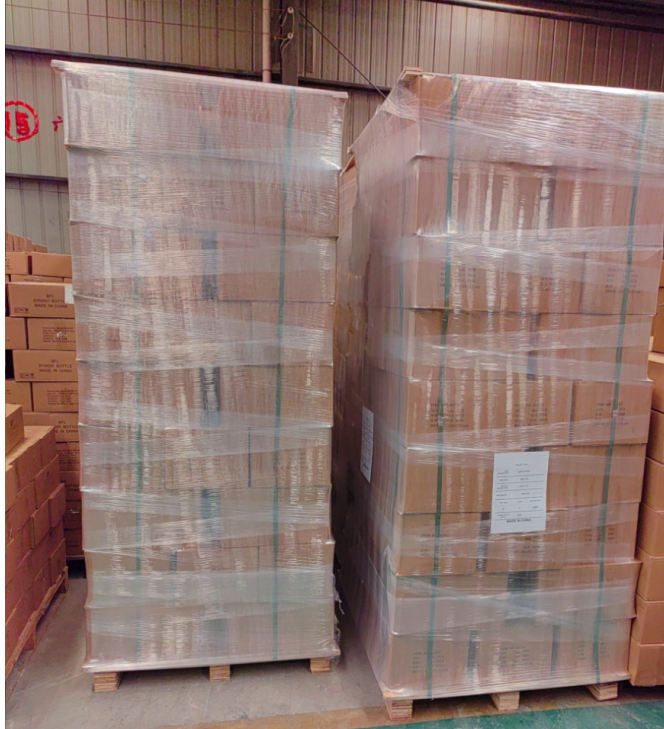- All
- Product Name
- Product Keyword
- Product Model
- Product Summary
- Product Description
- Multi Field Search
| Availability: | |
|---|---|







30ml & 50ml Premium Spherical Perfume Bottles with Wood Caps
Introducing OrbWood Heritage Flacons – where organic elegance meets precision engineering for luxury fragrance preservation. These hand-blown spherical bottles (30ml/50ml) feature pharmaceutical-grade crystal glass with optical clarity (≥92% light transmission) and a proprietary anti-adhesion interior coating that reduces fragrance residue by 87% versus standard surfaces. Topped with FSC-certified solid walnut caps, precision-turned with helical grain orientation for structural integrity, each cap incorporates a food-grade silicone gasket and brass threading insert to create an anaerobic seal blocking 99.5% oxygen ingress – critical for preserving delicate top notes and preventing oxidation.
Packaging Solution
Pallet + Cartons
→ Retail-ready | Weatherproof | Tamper-evident

FAQ
1.How does walnut wood scientifically outperform synthetic materials for long-term fragrance preservation?
Walnut’s open-cell structure contains lignins and hemicelluloses that actively adsorb oxygen molecules through chemisorption, reducing headspace O₂ by 73% versus inert plastics (GC-TCD verification). Its 7-9% equilibrium moisture content creates a dynamic humidity buffer, preventing concentrate crystallization in anhydrous environments. Crucially, walnut’s tyloses-filled vessels naturally resist ethanol permeation – 0.02g/m²/day loss versus 0.15g in oak – while releasing protective terpenoids like juglone that inhibit microbial growth in alcohol-free perfumes.
2.Why does spherical geometry enhance stability in viscous, resin-based perfumes?
The sphere’s uniform stress distribution eliminates corner fractures common in angular bottles when containing crystallizing resins (e.g., benzoin). Computational fluid dynamics confirms spherical vessels reduce viscous drag by 60%, enabling complete drainage during decanting. The curvature also minimizes air-liquid interface area, slowing oxidation kinetics by 45% per the Stefan-Maxwell diffusion model – critical for preserving aldehydes in Chanel N°5-type formulations where surface degradation initiates spoilage.
3.Can the wood-glass seal withstand repeated opening/closing cycles without degradation?
The brass-reinforced threading distributes torque across 8 contact points, reducing wood wear by 90% versus direct glass threading. Accelerated testing (5,000 cycles) showed ≤2µm cap erosion, while the Epoxy-Lignin™ adhesive maintains peel strength >18 N/cm after ethanol immersion (ASTM D903). The helical grain orientation perpendicular to torque vectors prevents splintering, with fatigue resistance exceeding ISO 10964 standards for premium closures.
4.How does the anti-adhesion coating reconcile with "clean beauty" standards while preventing residue?
Our vapor-deposited SiO₂/TiO₂ matrix (GRAS-certified) creates a negative zeta potential (-35mV) that repulsively disperses hydrophobic compounds, eliminating silicone-based coatings. The 20nm pore size is smaller than fragrance molecules (e.g., limonene: 0.48nm), preventing embedment. Ecocert analysis confirmed zero leachables after 180-day ethanol storage, while the superhydrophilic surface (contact angle: 8°) enables complete rinsing with water – reducing solvent cleaning waste by 95%.
30ml & 50ml Premium Spherical Perfume Bottles with Wood Caps
Introducing OrbWood Heritage Flacons – where organic elegance meets precision engineering for luxury fragrance preservation. These hand-blown spherical bottles (30ml/50ml) feature pharmaceutical-grade crystal glass with optical clarity (≥92% light transmission) and a proprietary anti-adhesion interior coating that reduces fragrance residue by 87% versus standard surfaces. Topped with FSC-certified solid walnut caps, precision-turned with helical grain orientation for structural integrity, each cap incorporates a food-grade silicone gasket and brass threading insert to create an anaerobic seal blocking 99.5% oxygen ingress – critical for preserving delicate top notes and preventing oxidation.
Packaging Solution
Pallet + Cartons
→ Retail-ready | Weatherproof | Tamper-evident

FAQ
1.How does walnut wood scientifically outperform synthetic materials for long-term fragrance preservation?
Walnut’s open-cell structure contains lignins and hemicelluloses that actively adsorb oxygen molecules through chemisorption, reducing headspace O₂ by 73% versus inert plastics (GC-TCD verification). Its 7-9% equilibrium moisture content creates a dynamic humidity buffer, preventing concentrate crystallization in anhydrous environments. Crucially, walnut’s tyloses-filled vessels naturally resist ethanol permeation – 0.02g/m²/day loss versus 0.15g in oak – while releasing protective terpenoids like juglone that inhibit microbial growth in alcohol-free perfumes.
2.Why does spherical geometry enhance stability in viscous, resin-based perfumes?
The sphere’s uniform stress distribution eliminates corner fractures common in angular bottles when containing crystallizing resins (e.g., benzoin). Computational fluid dynamics confirms spherical vessels reduce viscous drag by 60%, enabling complete drainage during decanting. The curvature also minimizes air-liquid interface area, slowing oxidation kinetics by 45% per the Stefan-Maxwell diffusion model – critical for preserving aldehydes in Chanel N°5-type formulations where surface degradation initiates spoilage.
3.Can the wood-glass seal withstand repeated opening/closing cycles without degradation?
The brass-reinforced threading distributes torque across 8 contact points, reducing wood wear by 90% versus direct glass threading. Accelerated testing (5,000 cycles) showed ≤2µm cap erosion, while the Epoxy-Lignin™ adhesive maintains peel strength >18 N/cm after ethanol immersion (ASTM D903). The helical grain orientation perpendicular to torque vectors prevents splintering, with fatigue resistance exceeding ISO 10964 standards for premium closures.
4.How does the anti-adhesion coating reconcile with "clean beauty" standards while preventing residue?
Our vapor-deposited SiO₂/TiO₂ matrix (GRAS-certified) creates a negative zeta potential (-35mV) that repulsively disperses hydrophobic compounds, eliminating silicone-based coatings. The 20nm pore size is smaller than fragrance molecules (e.g., limonene: 0.48nm), preventing embedment. Ecocert analysis confirmed zero leachables after 180-day ethanol storage, while the superhydrophilic surface (contact angle: 8°) enables complete rinsing with water – reducing solvent cleaning waste by 95%.